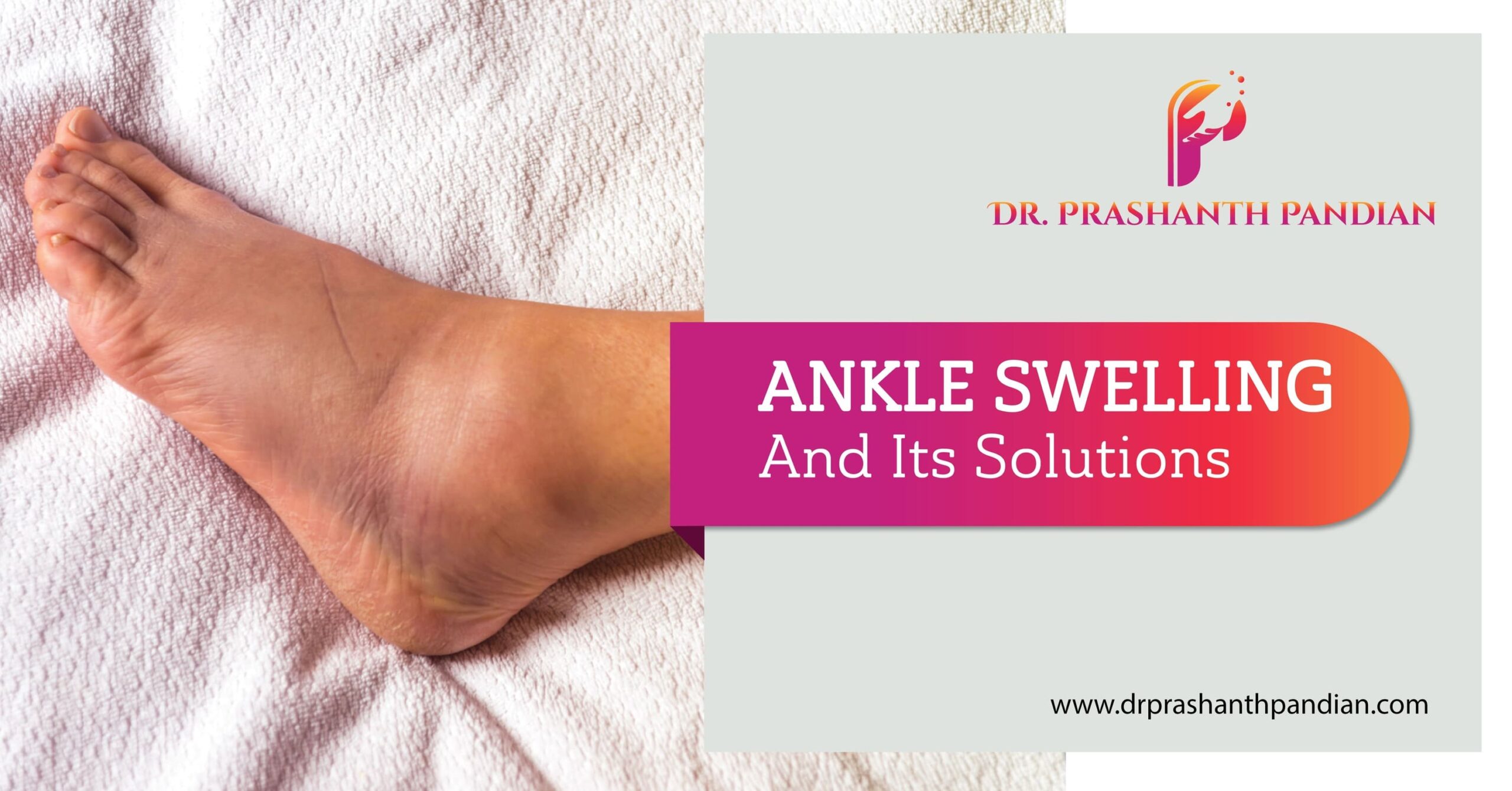The ankle connects your leg to your foot, involving main bones like the tibia and fibula (leg bones) and talus (foot bone). Swelling in the lower extremities is often due to inflammation or injuries, causing the ankles to swell. While swollen ankles are common and usually not serious, particularly after walking or standing for long periods, they can result from various factors, including fluid buildup, infections, or injuries.
A swollen ankle might appear larger than normal, making walking difficult and causing pain, with the skin feeling stretched and tight.
Possible Causes of Swelling in the Ankles:
- Pregnancy complications: Sudden or excessive swelling may signal preeclampsia, especially if accompanied by symptoms like abdominal pain, headaches, or vision changes.
- Foot or ankle injury like sprained ankles.
- Lymphedema: Accumulation of lymphatic fluid due to lymph vessel issues or lymph node removal, commonly seen after cancer treatment.
- Venous insufficiency: Early signs include ankle and foot swelling due to poor blood flow from the legs to the heart.
- Infection: Swelling can be a sign of foot infections, particularly concerning for individuals with diabetic neuropathy.
- Blood clot: Deep vein thrombosis (DVT) can cause swelling in one leg along with pain and fever.
- Heart, liver, or kidney disease: Swelling may indicate underlying conditions such as heart failure, liver disease, or kidney disease. Seek prompt medical evaluation if swelling is accompanied by symptoms like fatigue, weight gain, or shortness of breath.
Treatment for Swollen Ankles
Many cases of swollen ankles can be managed at home. Depending on the cause, home treatments include:
- Taking diuretics
- Wearing compression stockings
- Practicing the Legs-Up-the-Wall Pose
- Elevating legs and feet above heart level
- Reducing salt intake
- Following R.I.C.E. (rest, ice, compression, elevation) for injury-related swelling, but consult a doctor about appropriate activity levels.
Swollen ankles are common and usually not a cause for concern. They often resolve on their own, but persistent swelling or additional symptoms require medical attention. Consulting an experienced orthopedist ensures an accurate diagnosis and appropriate treatment, providing timely care and relief.




